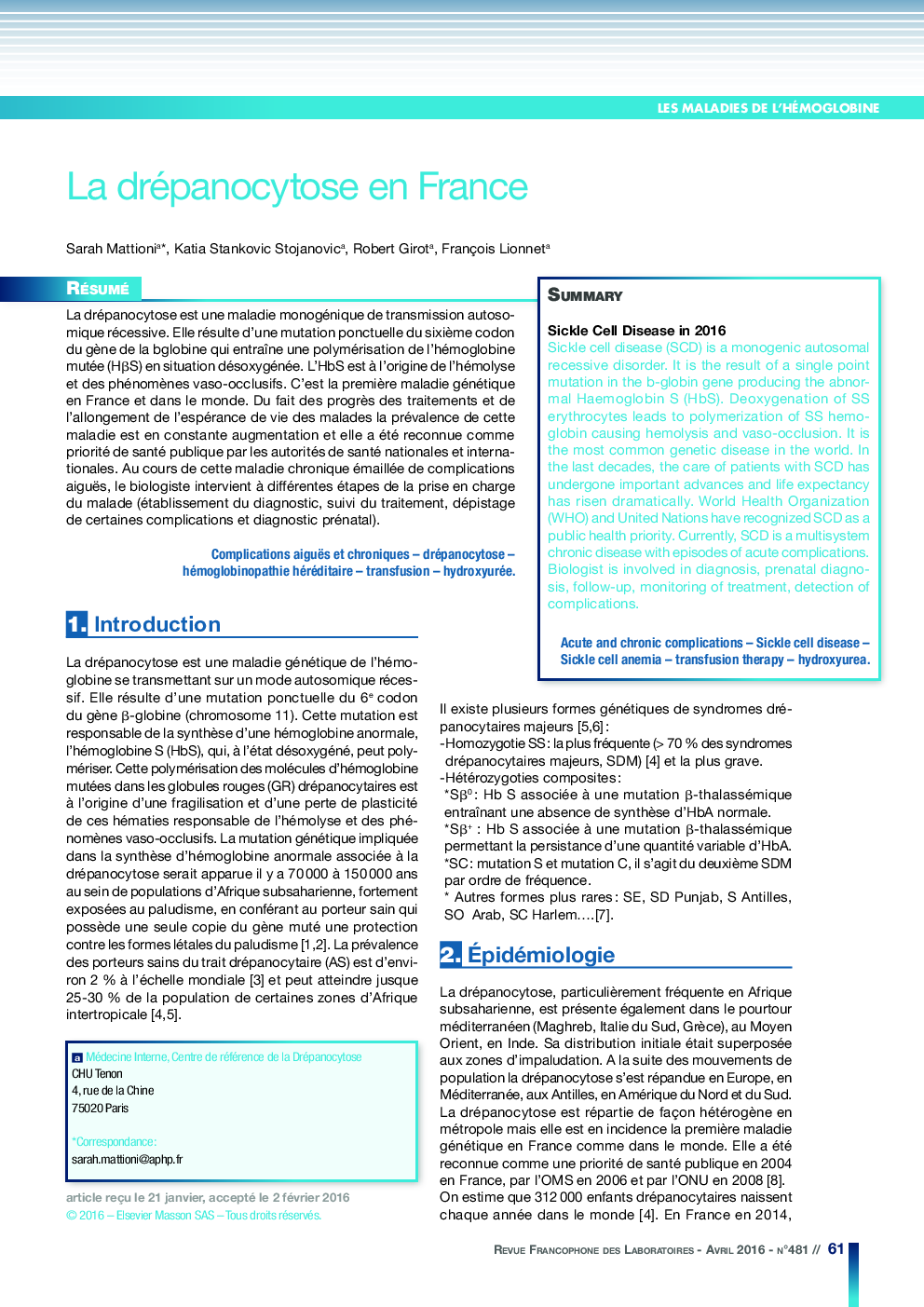| Article ID | Journal | Published Year | Pages | File Type |
|---|---|---|---|---|
| 7646427 | Revue Francophone des Laboratoires | 2016 | 6 Pages |
Abstract
Sickle cell disease (SCD) is a monogenic autosomal recessive disorder. It is the result of a single point mutation in the b-globin gene producing the abnormal Haemoglobin S (HbS). Deoxygenation of SS erythrocytes leads to polymerization of SS hemoglobin causing hemolysis and vaso-occlusion. It is the most common genetic disease in the world. In the last decades, the care of patients with SCD has undergone important advances and life expectancy has risen dramatically. World Health Organization (WHO) and United Nations have recognized SCD as a public health priority. Currently, SCD is a multisystem chronic disease with episodes of acute complications. Biologist is involved in diagnosis, prenatal diagnosis, follow-up, monitoring of treatment, detection of complications.
Keywords
Related Topics
Physical Sciences and Engineering
Chemistry
Analytical Chemistry
Authors
Sarah Mattioni, Katia Stankovic Stojanovic, Robert Girot, François Lionnet,
